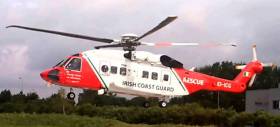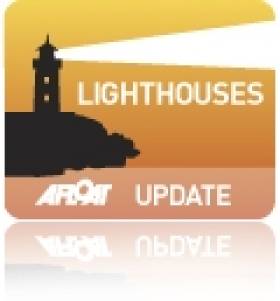Displaying items by tag: Eagle Island
Man Dies After Fishing Boat Capsize Off Mayo
The Irish Mirror reports that a man has died after a fishing boat capsized off the Mayo coast yesterday afternoon (Tuesday 10 April).
It’s understood that the deceased was a man in his 50s from North Mayo. He was one of three men recovered from a life raft some 16 miles off Eagle Island after their vessel sank.
Ballyglass RNLI and the Irish Coast Guard’s Sligo-based helicopter Rescue 118 were immediately tasked to search the area when a Mayday broadcast was picked up shortly after 12.30pm.
Rescue 118 spotted flares less than an hour later and proceeded to airlift the casualties for transfer to Sligo University Hospital.
Replacement of Crucial Eagle Island Atlantic Lighthouse by Helicopter Lift
#lighthouse – A challenging lighthouse redevelopment project has been completed on one of the most testing sites on the Irish Atlantic coast. The Commissioners of Irish Lights (CIL) has completed a re-construction and modernisation project at Eagle Island Lighthouse in Co. Mayo – a landmark lighthouse safeguarding Ireland's north-westcoast. The new light is being commissioned today.
This demanding project on Eagle Island consisted of the replacement of the entire upper part of the lighthousestructure using a helicopter. This is one of the mostchallenging construction projects undertaken by CIL in recent years.
Captain Robert McCabe, Director of the Operations and Navigation Services with CIL stated "Eagle Island lighthouse stands 220 feet above the Atlantic ocean, yetover the years waves from winter storms have damaged buildings and equipment in the walled lighthouse compound. Eagle Island lighthouse must provide a reliable and effective aid to navigation in extreme conditions because it is, at these times, when marinersmost require CIL aids. The new light on Eagle Island will provide a high quality, highly reliable 18 mile LED light and, for the first time, an automatic identification system. The solar battery system will remove the requirement for diesel generation with consequent environmental benefits and maintenance savings."
The Commissioners of Irish Lights (CIL) is actively involved in consolidating its coastal infrastructure which is the latest chapter in technology change that CIL is currently implementing; first came automation, then solarisation and now consolidation. The overriding purpose of consolidation is to provide a low-maintenance, low-energy, and low-cost Aids to Navigation service around the Irish Coast.
Eagle Island's unique location saw the establishment oftwo lighthouses on the island, both completed in 1835.Because of its close proximity to the continental shelfEagle Island experiences unusually large waves and over the years the lanterns have regularly been damaged by waves and water-borne rocks.
Due to these ferocious conditions, a huge storm wall was constructed surrounding the lighthouses. This wall was destroyed by the sea, reinforced and eventually abandoned after a particularly large storm in 1894 when it was decided to abandon the lower lighthouse.
The lighthouse keepers were withdrawn with the automation of the current lighthouse in 1988.
After almost 200 years of guiding mariners to safety, the lantern room and domed roof of the lighthouse tower had reached the end of their working life. The old lighthouse dome, the lantern room, the large glass lens and the bath of mercury in which the lens rotated were all removed. They were replaced with a stainless steel structuredesigned by CIL to withstand the aggressive and relentless marine environment.
This structure was manufactured by Shortt Stainless Steel in Limerick which incorporates a new roof, a guarded access platform and light pedestals. The roof also supports new waterproof and weather resistant flashing LED (light emitting diode) lights.
A temporary works system was also designed to access the previous dome for demolition works. This platformincorporated the means to manhandle heavy equipmentand the helicopter deck on which to land the new dome.Constructing all of this on top of the lighthouse tower was extremely challenging.
Commenting on the success of this unique construction challenge, Captain Robert McCabe of CIL stated "The CIL team who delivered this complex project have demonstrated exceptional engineering, planning and construction skills and made a positive contribution to safety at sea and the marine environment."

























































